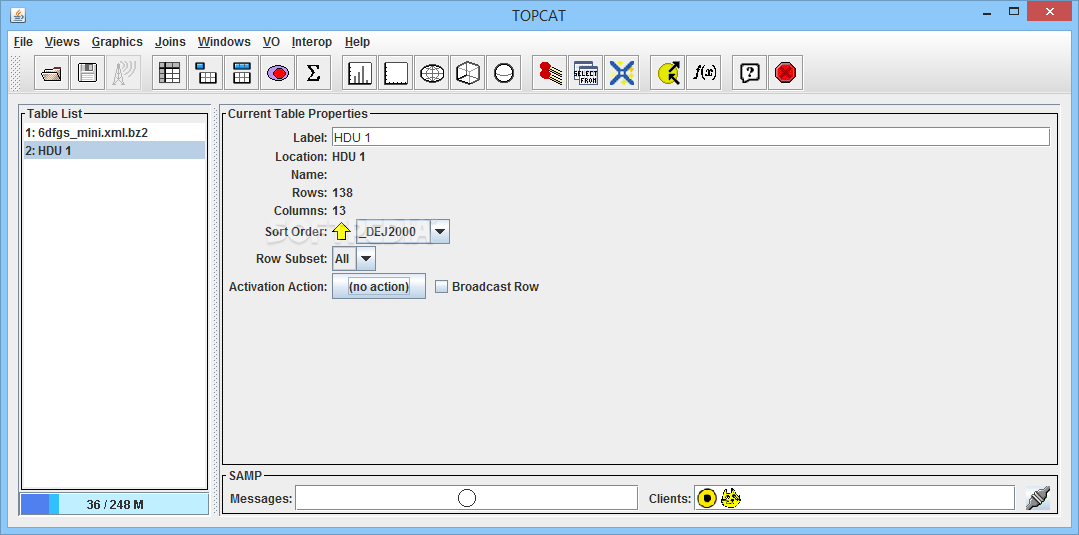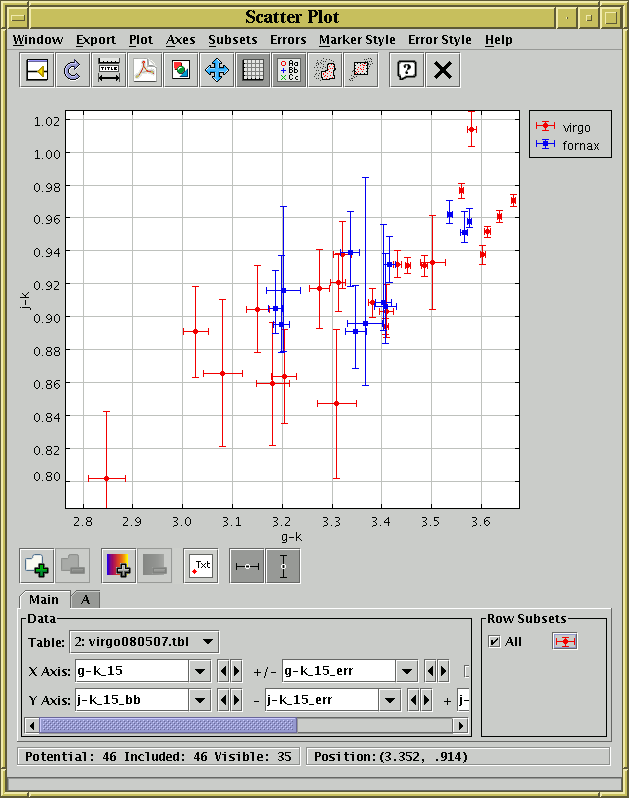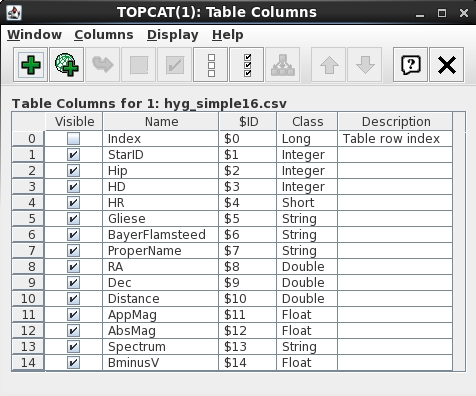



#Topcat astronomy code#
Although execution time of code might be slightly longer than lower level languages such as C/C++/Fortran, Python will likely save a significant amount of “programmer time.” I’ve found Python to be fast enough for every application I have used it thus far. A key advantage of Python over other programming languages is the speed at which quality code can be produced (that can then be reused later). ALMA even does most of their telescope scripting with Python, so it’s fast enough for real-time applications. Tom Aldcroft at the Center for Astrophysics has put together a wonderful Python for Astronomers tutorial that does a great job of introducing Python for astronomical use. Many additional packages/programs such as Scipy, Numpy, iPython, and Matplotlib turn Python into a powerful scientific and computational environment perfect for astronomers. An open-source, easy to use scripting language with extensive object-oriented programming capabilities, Python is designed for ease of code re-use and integration, including access to GUI toolkits like Tkinter (interface to Tk), wxPython, pyQT, and pyGKT. Python is the programming language that has been on the tip of everybody’s tounge recently, and for good reason. Programming Languages/Mathematical Packages: Python: Scipy, Numpy, matplotlib and more
#Topcat astronomy software#
This guide aims to provide an overview of software and programming languages useful for Astronomy that will be continually updated.
#Topcat astronomy free#
Feel free to peruse the websites of programs and programming languages such as IRAF, CASA, SExtractor, Python and more! If you have a favorite analysis program of your own that you would like to share, please leave a comment. The estimated age of 1600 ± 180 more » Myr indicates that NGC 4337 is an old open cluster with a bunch of red giant stars.Despite being observational and theoretical scientists (in training), astrophysicists spend a great deal of time at their computers (and not just checking the arXiv or their email)! This guide will serve as a nexus for many of the astronomical software programs that an astrophysicist might encounter in his or her daily work. The radial distribution of members provides a cluster radius of 7.′75 (5.63 pc). We find the normal interstellar extinction toward the cluster region. We provide Python code that allows to perform cone searches, as well as MATLAB code for performing cone searches, catalog cross-matching, general searches, as well as load and create these =. The first released version includes the following catalogs (by alphabetical order): 2MASS, 2MASS extended sources, AKARI, APASS, Cosmos, DECaLS/DR5, FIRST, GAIA/DR1, GAIA/DR2, GALEX/DR6Plus7, HSC/v2, IPHAS/DR2, NED redshifts, NVSS, Pan-STARRS1/DR1, PTF photometric catalog, ROSAT faint source, SDSS sources, SDSS/DR14 spectroscopy, SkyMapper, Spitzer/SAGE, Spitzer/IRAC galactic center, UCAC4, UKIDSS/DR10, VST/ATLAS/DR3, VST/KiDS/DR3, WISE and XMM. Several tools are provided to perform efficient cone searches at resolutions spanning from a few arc-seconds to degrees, within a few milliseconds time. To allow fast access, the catalogs are partitioned into hierarchical triangular meshes and stored in HDF5 files. Here we introduce the catsHTM tool, consisting of several large catalogs reformatted into HDF5-based file format, which can be downloaded and used locally. Fast access to large catalogs is required for some astronomical applications.


 0 kommentar(er)
0 kommentar(er)
